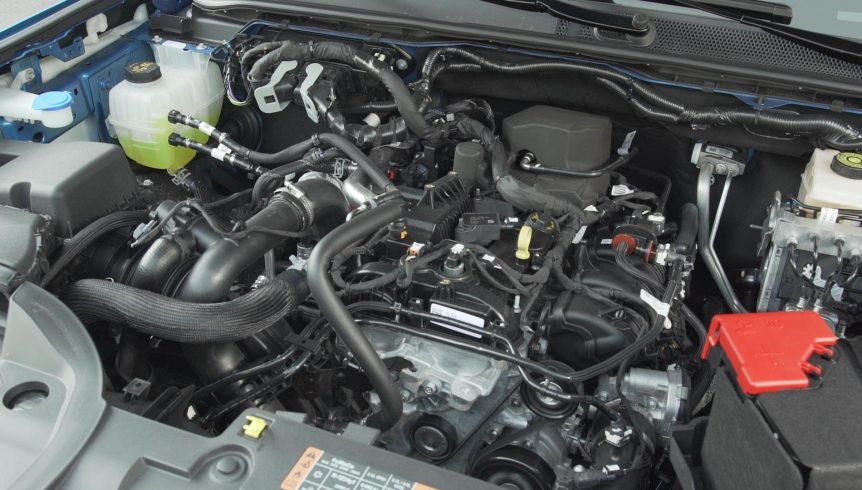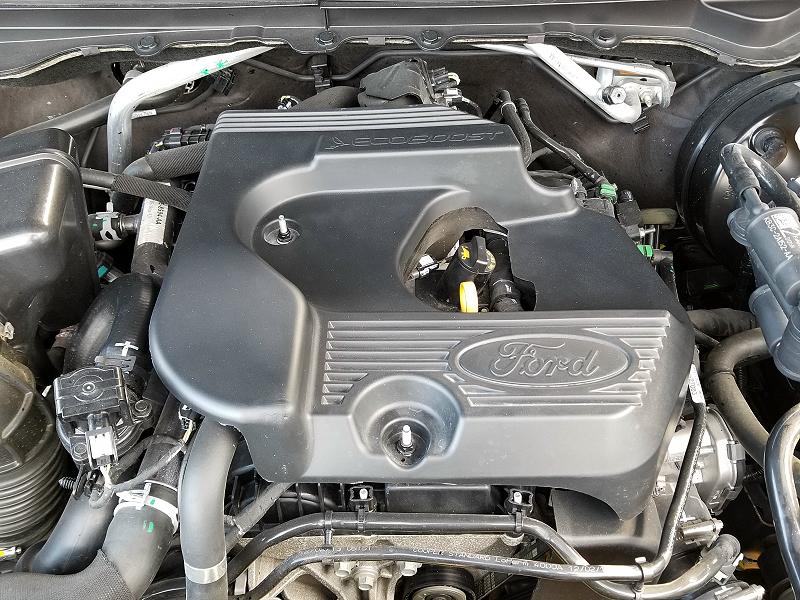Why the 2.2 Ford Ranger Engine Is a Popular Choice for Rugged and Reliable Performance
Why the 2.2 Ford Ranger Engine Is a Popular Choice for Rugged and Reliable Performance
Blog Article
Comprehending the Essentials of Cars And Truck Engines: Types, features, and functions

Introduction of Cars And Truck Engines
An automobile engine functions as the heart of a car, transforming fuel right into power to thrust it forward. This complex system consists of different elements that work in unison to make certain optimum efficiency and effectiveness. The fundamental operation of a cars and truck engine includes the interior burning procedure, in which gas and air are mixed, ignited, and gotten rid of to develop power.
The engine's style can considerably affect its performance, gas efficiency, and discharges. Secret parts include the cylinder block, pistons, crankshaft, and camshaft, each playing an important duty in the engine's overall feature.
In enhancement to these components, engines frequently utilize various systems such as fuel shot, ignition, and cooling systems to enhance efficiency and durability. Recognizing the fundamental technicians of car engines is essential for identifying concerns and carrying out maintenance, inevitably adding to the lorry's integrity and effectiveness over time.

Kinds Of Vehicle Engines
Automobile engines can be classified right into a number of kinds based on their design, fuel kind, and functional principles. 2.2 ford ranger engine. The most typical categories include interior combustion engines (ICE), electrical engines, and crossbreed engines
Inner combustion engines, which can be further divided into gas and diesel engines, operate by firing up a fuel-air mix to create power. Gasoline engines are commonly lighter and smoother, while diesel motor are extra fuel-efficient and deal greater torque.
Electric engines make use of electrical energy saved in batteries to power an electrical motor, giving immediate torque and zero exhausts during procedure. As modern technology advances, electric lorries (EVs) are significantly coming to be popular for their environmental advantages and lower running prices.
Crossbreed engines incorporate elements of both inner burning and electrical engines, permitting adaptable source of power and boosted fuel effectiveness. They can run in numerous settings, utilizing either the fuel engine, the electric motor, or both concurrently.
Each kind of engine has distinctive advantages and negative aspects, affecting their application in different car kinds and market sectors, from compact vehicles to sturdy trucks. Recognizing these types is essential for making informed choices regarding lorry choice and efficiency assumptions.
Engine Features Clarified
Recognizing engine features is vital for realizing just how vehicles operate efficiently. At the core of any kind of inner combustion engine lies the fundamental process of converting fuel into power. This procedure starts with the consumption stroke, where air and gas are drawn right into the burning chamber. Following this, the compression stroke presses the air-fuel mixture, raising its temperature and stress.
The ignition takes place following, firing up the mix and developing a fast growth of gases. This force drives the piston down during the power stroke, which ultimately equates into the rotational movement of the crankshaft. The web exhaust stroke then gets rid of the invested gases from the chamber, making means for a brand-new cycle to start.
Along with these primary features, engines likewise include systems that take care of air conditioning and lubrication, making sure ideal functional temperatures and reducing rubbing in between moving parts. This elaborate interplay of features allows the engine to create the power necessary for lorry propulsion while preserving performance and reliability. Comprehending these features supplies useful understanding right into the complexities of auto design and boosts the ability to diagnose and attend to engine-related concerns efficiently.
Key Engine Functions
Engine design incorporates several crucial features that considerably influence efficiency, efficiency, and longevity. One of one of the most crucial elements is the engine setup, which consists of inline, V-type, and level styles. Each setup impacts the engine's equilibrium, power, and dimension output, thus influencing general vehicle dynamics.
One more essential attribute is the engine variation, describing the total quantity of all cylinders. Larger variations typically produce more click now power but may jeopardize gas performance. Engine materials likewise play a critical duty; light-weight and high-strength materials, such as aluminum and magnesium alloys, enhance efficiency without including excessive weight.
The kind of gas injection system utilized-- such as direct or multi-port injection-- influences burning efficiency and discharges. Supercharging and turbocharging are functions that increase engine performance forcibly added air into the combustion chamber, boosting power outcome without considerably boosting engine size.
Last but not least, the visibility of innovative engine monitoring systems optimizes fuel-air mix and ignition timing, adding to smoother procedure and better fuel economic situation. Jointly, these features define an engine's capabilities, setting the structure for its efficiency and durability in an affordable vehicle landscape.
Upkeep Tips for Engines
Proper engine upkeep is critical for making certain optimal efficiency and longevity, as overlooking routine treatment can result in substantial concerns down the line. To preserve your engine effectively, begin with normal oil changes, normally every 3,000 to 7,500 miles, relying on the type of oil utilized. Fresh oil lubricates engine components, minimizing friction and wear.
Furthermore, keeping track of coolant degrees is important to avoid overheating. Ensure that the coolant is topped up and is in excellent condition to keep reliable temperature regulation. Consistently change and evaluate air and gas filters, as stopped up filters can prevent airflow and gas distribution, compromising engine efficiency.
Additionally, take notice of ignition system and ignition systems. Used or faulty spark plugs can bring about misfiring and lowered performance. Examining the battery terminals and connections for corrosion is additionally necessary, as a weak battery can influence engine starting.

Final Thought
In recap, a thorough understanding of auto engines incorporates various types, functions, and crucial attributes that dramatically influence lorry performance. Inner burning engines, together with electrical and hybrid choices, demonstrate diverse devices for power conversion. 2.2 ford ranger engine. Identifying the essential functions, such as consumption and exhaust cycles, alongside important engine attributes like configuration and gas injection systems, outfits cars and truck owners with the expertise necessary for reliable maintenance and operation, eventually improving automobile longevity and efficiency
An auto engine serves as the heart of a car, transforming gas right into mechanical energy to push it ahead. The basic operation of an automobile engine entails the internal combustion procedure, where fuel and air are blended, fired up, and eliminated to produce power.
On a regular basis evaluate and replace air and fuel filters, as blocked filters Read Full Report can prevent air movement and gas delivery, compromising engine efficiency. - 2.2 ford ranger engine
In summary, a thorough understanding of car engines encompasses various kinds, features, and vital features that considerably influence automobile performance. Recognizing the important functions, such as intake and exhaust cycles, together with important engine features like configuration and fuel injection systems, equips cars and truck owners with the knowledge essential for effective upkeep and procedure, inevitably boosting vehicle long life and effectiveness.
Report this page